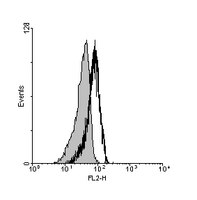06-1082 Sigma-AldrichAnti-Interleukin 27 (IL-27) Antibody
Anti-Interleukin 27 (IL-27) Antibody detects level of Interleukin 27 (IL-27) & has been published & validated for use in WB, FC.
More>> Anti-Interleukin 27 (IL-27) Antibody detects level of Interleukin 27 (IL-27) & has been published & validated for use in WB, FC. Less<<Recommended Products
Overview
| Replacement Information |
|---|
Key Spec Table
| Species Reactivity | Key Applications | Host | Format | Antibody Type |
|---|---|---|---|---|
| H, Chp | WB, FC | Rb | Affinity Purified | Polyclonal Antibody |
| References |
|---|
| Product Information | |
|---|---|
| Format | Affinity Purified |
| Control |
|
| Presentation | Purified rabbit polyclonal in buffer containing PBS with 0.08% sodium azide. |
| Physicochemical Information |
|---|
| Dimensions |
|---|
| Materials Information |
|---|
| Toxicological Information |
|---|
| Safety Information according to GHS |
|---|
| Safety Information |
|---|
| Storage and Shipping Information | |
|---|---|
| Storage Conditions | Stable for 1 year at 2-8°C from date of receipt. |
| Packaging Information | |
|---|---|
| Material Size | 100 µg |
| Transport Information |
|---|
| Supplemental Information |
|---|
| Specifications |
|---|
| Global Trade Item Number | |
|---|---|
| Catalogue Number | GTIN |
| 06-1082 | 04053252732751 |
Documentation
Anti-Interleukin 27 (IL-27) Antibody Certificates of Analysis
| Title | Lot Number |
|---|---|
| Anti-Interleukin 27 (IL-27) | 2482252 |
| Anti-Interleukin 27 (IL-27) - NRG1700059 | NRG1700059 |
Brochure
| Title |
|---|
| Product Selection Guide - Antibodies, small molecule inhibitors, kits, assays and proteins for signaling research. |













